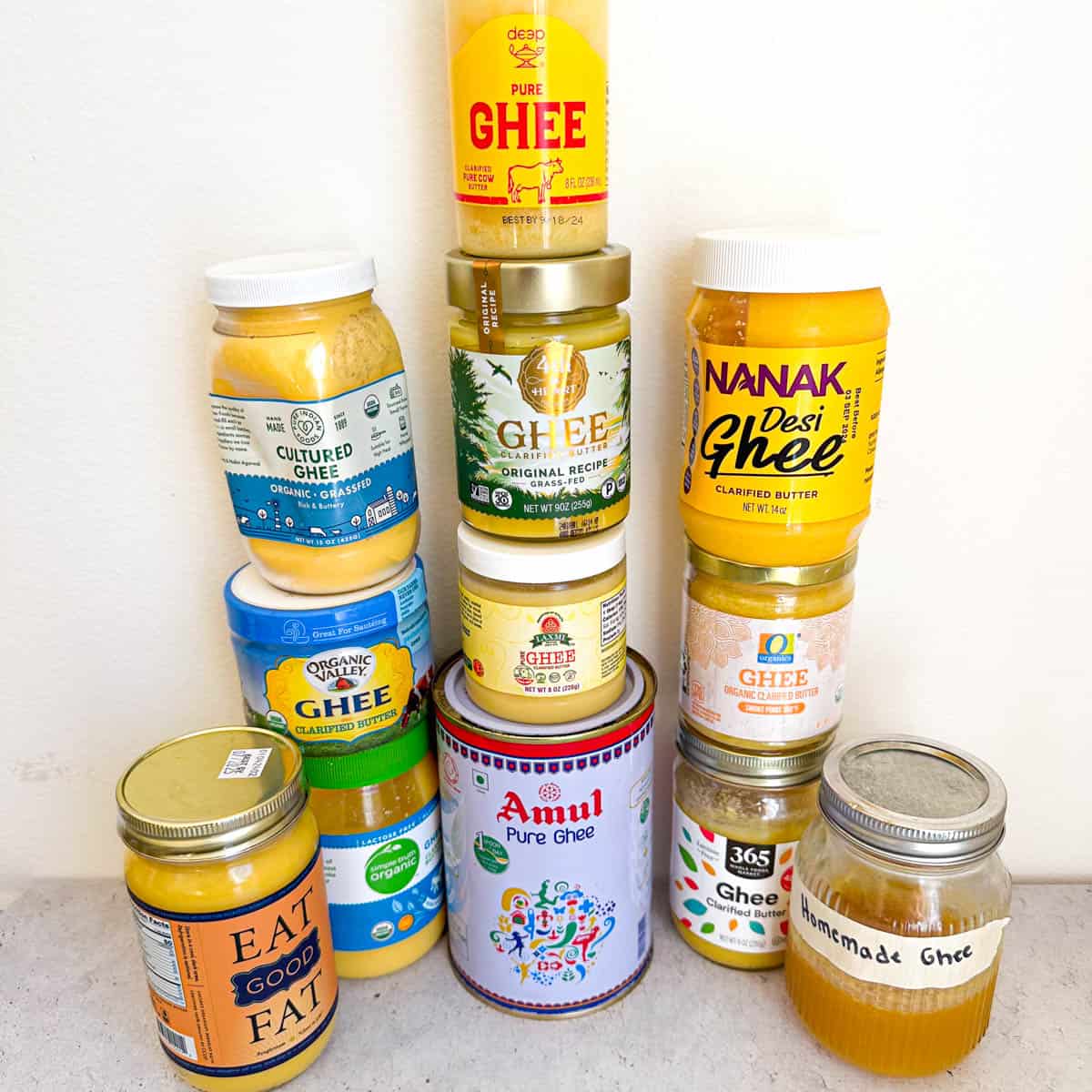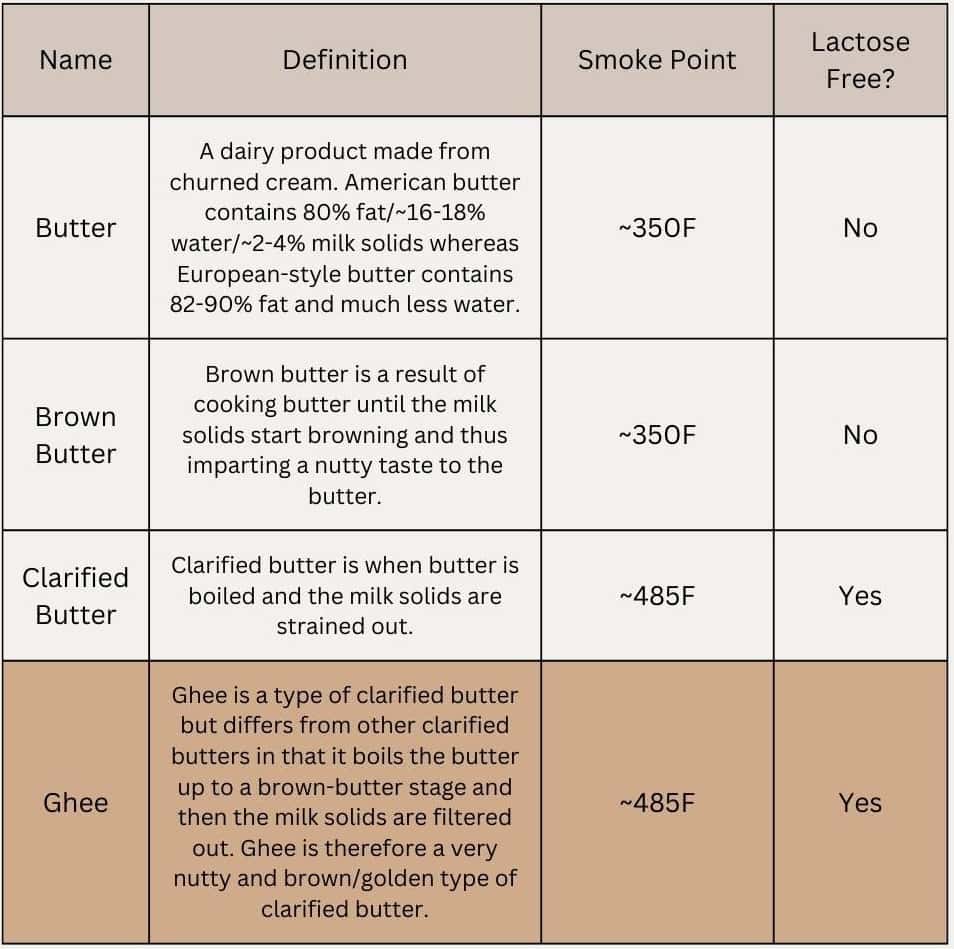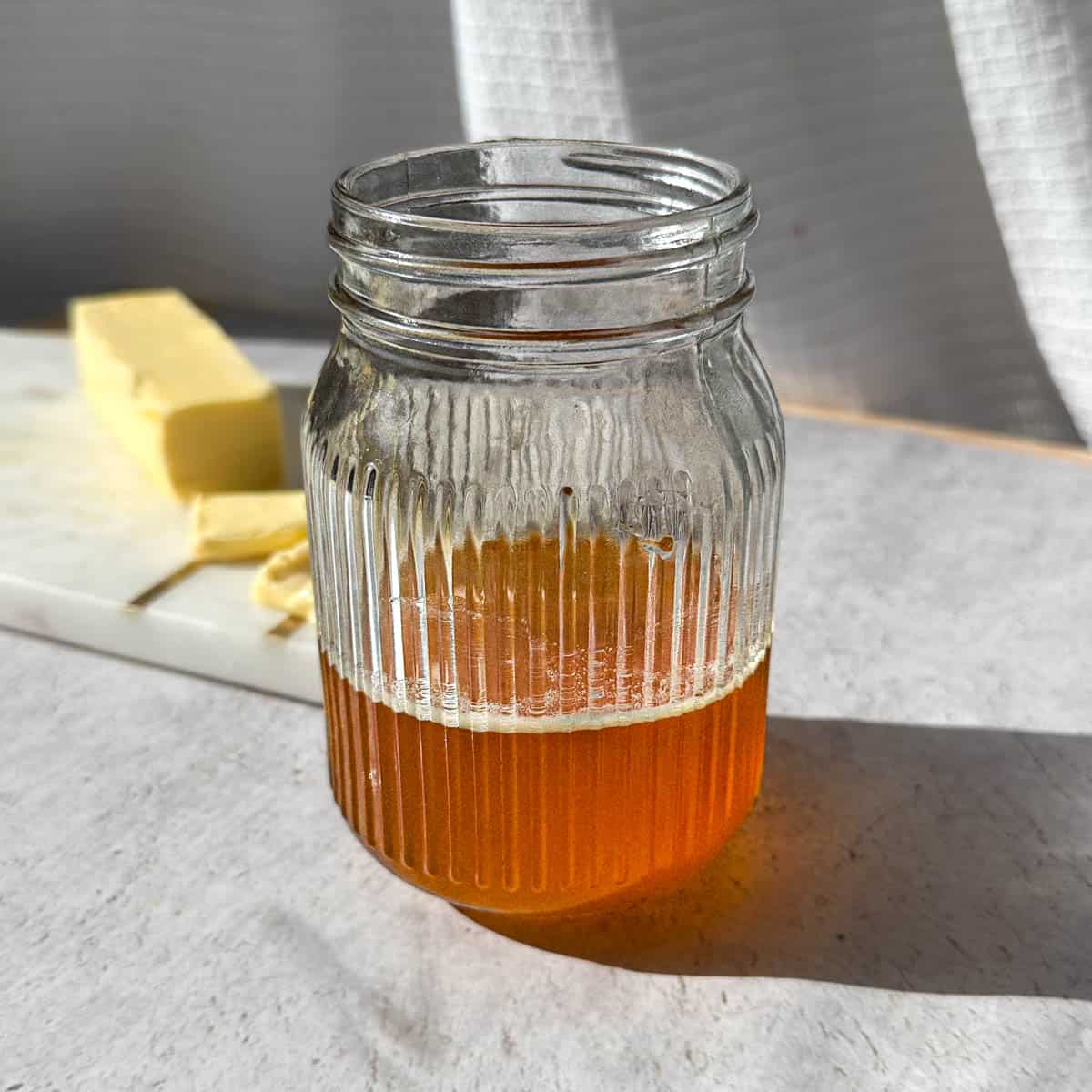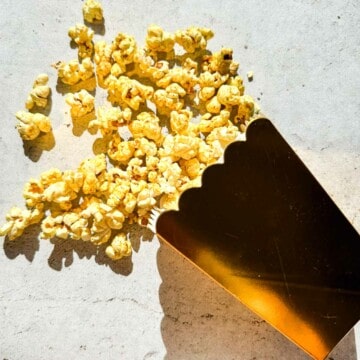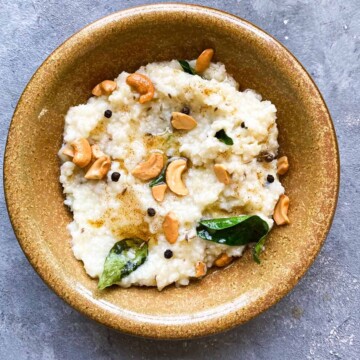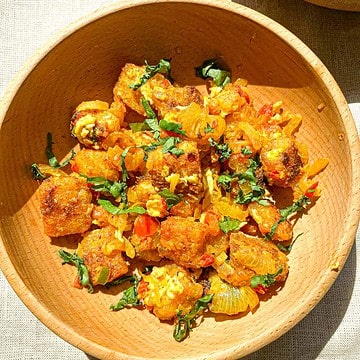Cultured butter has a tangy and complex flavor compared to regular butter because of the fermentation that occurs with the bacteria. That same delicious flavor is then passed along to the cultured ghee. However, cultured ghee does not have the same live cultures as cultured butter because the bacteria is killed in the ghee making process.
Buffalo milk ghee tends to be richer than cow milk ghee. The reason is that buffalo milk has more fat than cow milk so the extra fat leads to a richer tasting ghee. Buffalo milk is white and cow milk is yellow. This is because buffalos can convert beta-carotene found in grass to Vitamin A more efficiently than cows. Thus the higher beta-carotene levels in cow’s milk can indicate how much grass that the cow ate. Buffalo milk also as more protein, calcium, and other vitamins compared to cow milk, yielding those same properties in ghee. Buffalo milk/Buffalo milk ghee is hard to get in the United States but is more readily available in India. Buffalo milk based ghee is often called white ghee whereas cow milk based ghee is often called yellow ghee.
Do substitute ghee for butter in cooking applications. When substituting ghee for butter in cooking, the final dish will have a nuttier or brown butter taste that is more prominent than a neutral butter taste. Do substitute ghee for butter in baked goods that call for melted butter. Do NOT substitute ghee for butter in baked goods that call for chilled butter. Examples are recipes for pie dough, croissants, and biscuits as these recipes rely on the water in butter to evaporate in the oven, thus creating steam and the flaky layers. In general, if substituting ghee for butter in baking applications, expect the final product to be crispier as there is as much as 20% less water in ghee compared to butter. Do NOT substitute butter for ghee in high heat applications as the butter can burn. Example: Cooking chicken on high heat in an oven or on stovetop on high heat with butter being the main fat! Do substitute butter for ghee when it is in low heat/no heat coking applications. Examples include spreading on toast or sautéing veggies/protein on low heat.
There are so many brands of ghee on the market, but I’ve listed some of my favorite Indian and American brands below. However, if you want to really understand why these are my favorites and what to look for when buying ghee, check out this blog post where I test eleven different brands of ghee and give recommendations and the reasons why I love my favorites. Pros of Buying:
It’s convenient and saves time. There are a lot of great farmers and businesses making great quality ghee which you can help support.
Cons of Buying:
It costs more than making ghee at home. You can check out the analysis below on the price of homemade ghee vs. store-bought ghee. You can’t control the nuttiness of ghee like you can at home!
Pros of Making Ghee:
You can control how nutty the ghee is based on how long you cook the milk solids. It tends to be cheaper than the equivalent quality of store-bought ghee. You can control the quality of the ingredients that go in. You know the freshness based on date when it’s made.
Cons of Making Ghee:
It takes more time/effort to make ghee than to buy it.
Price analysis of homemade vs. store-bought ghee
The price range of ghee and butter varies drastically. In general for homemade ghee, every 2 cups of butter bought yields about ~1.6 - 1.75 cups of ghee. So the price of homemade ghee directly correlates with the quality of butter used. I made ghee from Kerry Gold unsalted butter which is an organic, grass-fed butter that cost $9.58 for 2 cups of butter and yielded 14 ounces of ghee. When I compared it with my chart of prices for eleven ghee brands, the cheapest grass-fed organic ghee, which was Simple Truth Organic, was $10.99 for 14 ounces. The price difference is even greater when you analyze the taste of the homemade ghee and compare it to a ghee brand that has an equivalent taste like Pure Foods Indian Ghee (23.23/15 ounces). So in general, making ghee at home is cheaper AND tastier than buying it at the store.
